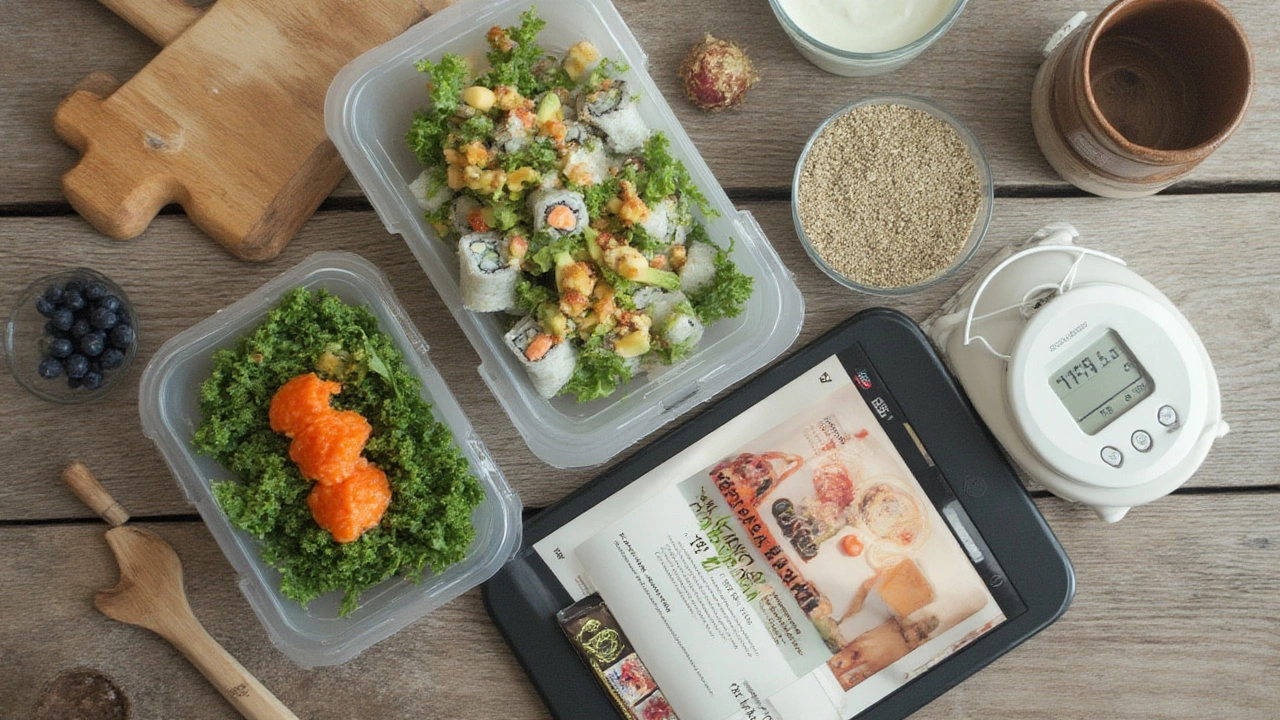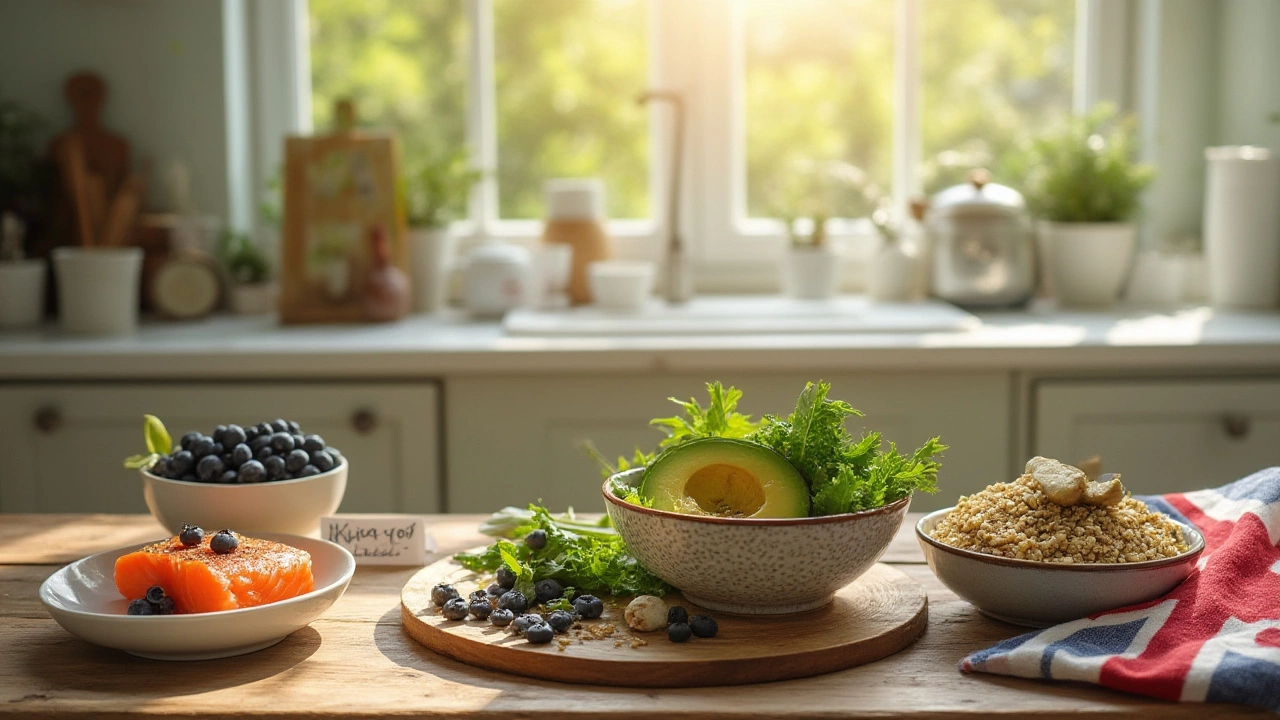If you were hoping to stumble onto a magic ingredient that melts fat overnight, sorry to burst the bubble. But when it comes to getting serious about shedding pounds and eating better, there really are foods with “superpowers” so good they’ve earned the name superfoods. These aren’t expensive powders or trend-a-minute snacks. They’re right there at most grocery stores. What matters is knowing which ones actually work and why—because not every fruit, nut or green thing will make the scale budge. Some really do make a difference. Ready for a little nutrition know-how that cuts through hype? Let’s talk about the five foods nutritionists and researchers swear by for healthy, real-world weight loss.
The Superfood List: Evidence-Backed Foods For Weight Loss
Walk into any health food store and you’ll see “superfood” labels plastered on everything from protein bars to frozen dinners. But what makes a food truly “super” for weight loss? It comes down to fiber, protein, healthy fats, and a smart hit of nutrients your body actually uses to fuel up—plus, foods that make you feel satisfied instead of hungry an hour later. Here are the five that tick every box:
1. Oats
Surprised? Oats are a powerhouse for healthy weight loss. Not only are they packed with soluble fiber (think beta-glucan), which helps lower bad cholesterol, but they also digest slowly, keeping you full for longer. Start your morning with a simple bowl of steel-cut or old-fashioned oats (ditch the instant kind loaded with sugar). Add fruit, cinnamon, or a handful of nuts to boost flavor without packing on calories. Science backs oats for controlling appetite: a 2023 clinical study published in Nutrients showed people eating oats at breakfast consumed fewer calories throughout the rest of the day than those who ate the same calories from a refined cereal.
2. Leafy Greens (Spinach, Kale, Swiss Chard)
Dark greens are about as close to calorie-free as real food gets, but that’s just the start. Packed with fiber, vitamins A, C, and K, and powerful plant compounds that support metabolism, leafy greens also take up a lot of space on your plate without adding extra calories. The trick is to use them as a “base” for meals: salads, smoothies, omelets, or stir-fries. Mixing greens into soup or grain bowls is an easy calorie-cutter. A 2021 study from the American Journal of Clinical Nutrition found that swapping half a serving of starchy foods with leafy greens led to an average two-pound greater weight loss over 12 weeks.
3. Greek Yogurt
This thick, tangy yogurt is loaded with protein—around 15 to 20 grams per 6-ounce serving. It’s also fermented, which means it helps gut health and keeps digestion humming along. The real magic? Protein boosts satiety. When you feel full, you eat less, and there’s evidence for that: a 2022 British Journal of Nutrition study revealed that people who ate high-protein, low-sugar Greek yogurt as a snack reported up to 30% less hunger throughout the day. Go for the plain, unsweetened kind and add berries or a drizzle of honey if you want flavor without sugar overload.
4. Beans and Lentils
Want to cut calories without sacrificing satisfaction? Add beans and lentils to the menu. These legumes are fiber giants, loaded with plant-based protein and slow-burning carbs. Both belly-filling and good for blood sugar, they help you avoid energy crashes that lead to snacking or overeating. Swap half your meat for lentils in chili, toss chickpeas into salads, or make black bean quesadillas. Research doesn’t lie — a 2020 meta-analysis in Obesity Reviews showed daily servings of beans and lentils cut waist size and body weight compared to similar-calorie diets without legumes.
5. Berries (Blueberries, Strawberries, Raspberries, Blackberries)
Berries are low in calories and loaded with antioxidants and fiber. The fiber acts almost like a traffic cop for sugar, slowing it down so your blood glucose doesn’t spike and crash. Plus, berries are naturally sweet, so they curb the craving for junk food. A 2023 study from the Harvard School of Public Health found that swapping a daily handful of berries for high-sugar snacks led to an average loss of two more pounds over a ten-week period.
| Superfood | Fiber (g/serving) | Protein (g/serving) | Calories (per serving) |
|---|---|---|---|
| Oats (½ cup dry) | 4 | 5 | 150 |
| Spinach (2 cups raw) | 2 | 2 | 14 |
| Greek Yogurt (6 oz) | 0 | 15 | 100 |
| Lentils (½ cup cooked) | 8 | 9 | 120 |
| Blueberries (1 cup) | 4 | 1 | 80 |

How These Superfoods Boost Weight Loss
You might be hungry for answers about why these five foods are better than the latest diet fad. Here’s the deal: it all comes down to how your body digests and responds to what you eat. Let’s break it down, food by food, so you know what’s actually happening under the hood when you load your plate with these powerhouses.
Oats act like speed bumps for your stomach. Thanks to soluble fiber, they absorb water, creating a gel that slows down the movement of food through your gut. You eat less at breakfast—and you’re not looking for snacks by mid-morning. Fiber also feeds the good bacteria in your gut, which supports better metabolism and helps your immune system. Try swapping out a typical bagel or muffin for oats three times a week, and you’ll notice the hunger dial turns down. It’s a small swap with big upside.
Leafy greens fill your plate, not your waistline. Since they pack so few calories, they let you eat “volume meals”—meaning you get to eat a heaping helping without blowing your calorie budget. The antioxidants in greens also tamp down inflammation (which plays a sneaky role in weight gain), and their gentle bitterness can help reset your taste buds, so processed food starts tasting too sweet. Add greens to a stir-fry when you’re hungry, and you’ll feel stuffed with barely any calories added.
Greek yogurt’s muscle is its protein. Protein triggers the release of hormones that control appetite, like peptide YY and GLP-1, giving you that full-bellied feeling long after you eat. It also helps preserve muscle as you lose weight—crucial since muscle burns more calories at rest. Mixing a scoop of Greek yogurt into smoothies or using it as a creamy salad dressing base gives you a protein punch with minimal calories. Go easy on the flavored versions; the added sugars can undo the good stuff.
Beans and lentils bring both fiber and protein to the table. This double act slows down digestion and makes you feel full. High-fiber diets are proven to lower the risk of obesity—one trial published in The Lancet in 2022 showed people who ate at least 25g of fiber daily had a 30% lower risk of significant weight gain over a five-year follow-up. Beans are cheap, have near-infinite uses, and are vegan-friendly, so they’re a no-brainer for anyone watching their weight.
Berries satisfy a sweet tooth for tiny calories. Their fiber means natural sugars absorb slowly, preventing blood sugar rollercoasters that trigger hunger. Take advantage of the long berry season—freeze extras, blend in smoothies, or sprinkle on Greek yogurt for a low-calorie, filling snack. The deep colors come from anthocyanins, compounds now linked to lower body mass index. In lab tests, these compounds even helped fat cells from growing as big or as quickly.

Smart Tips for Adding Superfoods to Everyday Meals
Knowing what to eat is one thing—working it into your real, chaotic life is another. Here are some tips that make superfoods less of a chore and more of a habit, no meal plan required.
- Swap regular cereal for overnight oats. Prep a few jars at once, using almond milk, chia seeds, and frozen blueberries for an easy grab-and-go option.
- Upgrade your salad: mix several leafy greens with shredded cabbage, a scoop of lentils, a handful of walnuts, and dress with Greek yogurt blended with herbs and lemon.
- Blend spinach into fruit smoothies—you honestly won’t taste it, especially with mango or banana in the mix.
- Batch-cook lentil soup or chili for freezing. Having a healthy option that’s ready fast can stop you from caving to takeout.
- Keep a tub of plain Greek yogurt in the fridge. Use it as a swap for sour cream or mayo, or stir with chopped fruit and nuts for a protein-packed snack.
- Snack smart: instead of chips, pack pre-portioned containers with berries and a sprinkle of seeds or a couple of ounces of mixed nuts.
- Pair superfoods for better results—add berries to your morning oats or a scoop of beans on a leafy green salad for a mega-dose of fiber and vitamins.
It’s not about abandoning everything you love. It’s about crowding your plate with more of what works, so there’s less room for what doesn’t. If you’re skeptical, try tracking how you feel for a week when you make these swaps—even jotting down hunger and energy levels. The change is real. One week without mid-afternoon energy crashes, and you’ll wonder why you waited so long. Superfoods are no longer a secret weapon—they’re your new standard. Your body (and scale!) will thank you.

